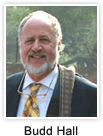 Followers of research studies, blogs and social media communications associated with our UNESCO Chair in CBR and Social Responsibility in Higher Education will have heard much about community engaged learning and community led participatory research as well as the opportunities associated with Higher Education linking to the UN Sustainable Development Goals. There is a fresh new discourse and practice emerging in Canada and perhaps elsewhere that we should be mindful of. Social infrastructure is defined, “as the organizational arrangements and deliberate investments in society’s systems, relationships and structures to enable society to create a resilient, just, equitable and sustainable world” (Sandburg, 2017). The core of this idea is that universities, through thoughtful partnerships with community and private sector actors can contribute in major ways to goals of economic, social and environmental justice through the fundamental ways that they operate. New residencies for students, new urban classrooms, a focus on green procurement for the food and teaching materials, as well as existing networks of research, community led research and much more can all be thought through from the lens of addressing local challenges where students, academic and other staff live and recreate. “By harnessing their full range of financial, Physical, symbolic, human, social and intellectual assets in collaboration with others, advanced education institutions can…contribute to become vibrant players in community building”(Sandburg, 2017).
Followers of research studies, blogs and social media communications associated with our UNESCO Chair in CBR and Social Responsibility in Higher Education will have heard much about community engaged learning and community led participatory research as well as the opportunities associated with Higher Education linking to the UN Sustainable Development Goals. There is a fresh new discourse and practice emerging in Canada and perhaps elsewhere that we should be mindful of. Social infrastructure is defined, “as the organizational arrangements and deliberate investments in society’s systems, relationships and structures to enable society to create a resilient, just, equitable and sustainable world” (Sandburg, 2017). The core of this idea is that universities, through thoughtful partnerships with community and private sector actors can contribute in major ways to goals of economic, social and environmental justice through the fundamental ways that they operate. New residencies for students, new urban classrooms, a focus on green procurement for the food and teaching materials, as well as existing networks of research, community led research and much more can all be thought through from the lens of addressing local challenges where students, academic and other staff live and recreate. “By harnessing their full range of financial, Physical, symbolic, human, social and intellectual assets in collaboration with others, advanced education institutions can…contribute to become vibrant players in community building”(Sandburg, 2017).
Edward Jackson, a long-time and distinguished Canadian colleague in our work on community led research draws attention to achievements done by the University of Winnipeg in a recent report he has authored for the J.W.McConnell Foundation (Jackson, 2018). The University of Winnipeg is a downtown urban campus in the heart of a city that faces many urban challenges. The UW created the UW Community Renewal Corporation around 2006 to stimulate creative ideas to revitalize the downtown core. Built primarily for campus classroom purposes, the UWCRC has served as a space for community meetings, artistic endeavours and cultural activities with the urban Indigenous community and as a source of ideas for others. In 2016, UW completed a 14-storey, 102-unit mixed-income residential development known as the Downtown Commons illustrating the corporation’s strategy. Its 51 affordable units (including those reserved for U of W students with families, as well as immigrant, refugee and Indigenous families) benefit from provincial support. Other units are offered to students and the community at large at market rates, including 18 units with premium rents. The social infrastructure thinking at UW includes much more including the choice of a local non-profit organisation that provides jobs and training for new immigrants to provide the food services for the University. This is in stark contrast to the vast majority of universities that have handed their food services over to large private sector national and international companies.
The key for higher education institutions to move forward on the path towards building social infrastructure in our communities is to apply a community lens to the very many already existing assets that universities have including research, built structures, networks and partnerships, financial and teaching and learning capacities. The challenge for our century is how to maximize the capacities of higher education institutions around the world to build social infrastructure for our communities.
References
Sandberg, Coro (2017) Maximizing the Capacities of Advanced Education Institutions to Build Social Infrastructure for Canadian Communities. Montreal and Vancouver: The J.W. McConnell Family Foundation and Simon Fraser University
Jackson, Edward (2018) Catalyst for Sustainability: The Achievements, Challenges, Lessons and Prospects of the University of Winnipeg Community Renewal Corporation. Montreal: The J.W. McConnell Foundation.




